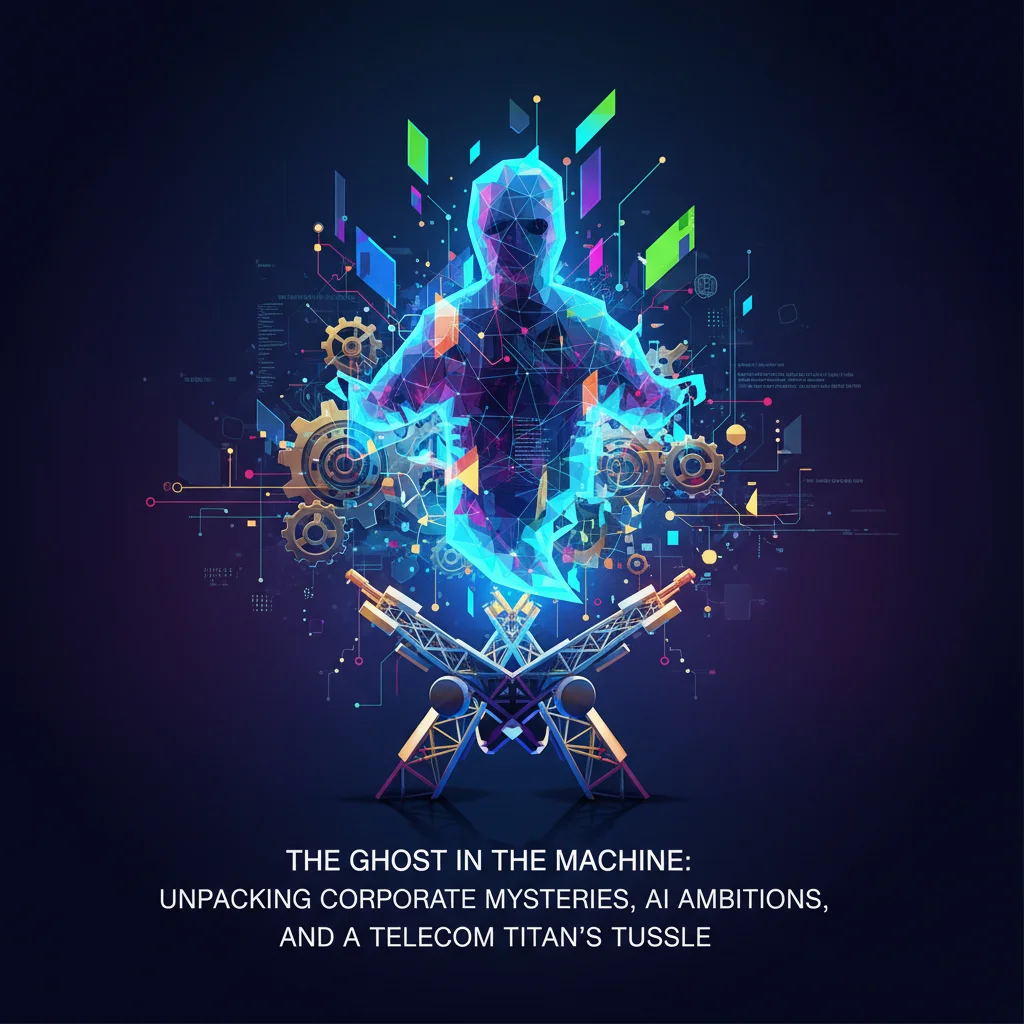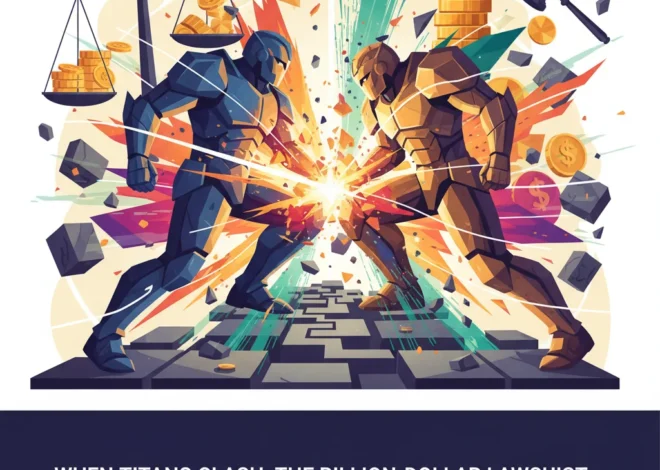
The Ghost in the Machine: Unpacking Corporate Mysteries, AI Ambitions, and a Telecom Titan’s Tussle
An Empire Built in the Shadows
In the high-stakes world of modern finance, fortunes are often built on bold vision and calculated risk. But what happens when the architect of a multi-billion dollar empire is a virtual ghost? This is the story of First Brands Group, an automotive parts conglomerate that rocketed to prominence, and its enigmatic founder, Patrick F.X. Muldoon. It’s a narrative that serves as a stark reminder of the risks lurking within the opaque corners of private equity and the profound impact of a shifting global economy.
For years, Muldoon, alongside the formidable London-based private equity firm TDR Capital, stitched together an automotive aftermarket powerhouse. Through a relentless, debt-fueled acquisition spree, they snapped up familiar names like Raybestos brakes, Fram filters, and Autolite spark plugs. The strategy was classic private equity: leverage debt to acquire assets, streamline operations, and aim for a lucrative exit. By early 2022, the company was valued at a staggering $11 billion, a testament to its aggressive growth. Yet, the man at the helm remained a mystery, with no public photos and a near-nonexistent digital footprint—a phantom in the complex machinery of global finance.
This tale of corporate intrigue, however, is just one piece of a larger puzzle. As we delve into the mechanics of First Brands’ rise and subsequent struggle, we also turn our attention to two other critical arenas where strategy, capital, and risk are colliding: Europe’s ambitious but fraught quest for dominance in Artificial Intelligence and the high-stakes boardroom battle threatening to derail a landmark telecommunications deal involving private equity giant KKR. Together, these stories paint a vivid picture of the challenges and opportunities defining today’s investing landscape.
The Leveraged Bet: Deconstructing the First Brands Playbook
The core of the First Brands strategy was rapid expansion financed by the burgeoning private credit market. This sector, a key component of modern financial technology, offers loans to companies outside the traditional banking system. TDR and Muldoon used this capital to consolidate a fragmented industry, creating a vertically integrated giant. The model works beautifully in an environment of low interest rates, where the cost of borrowing is minimal and growth seems limitless.
However, the very leverage that fueled its ascent became its Achilles’ heel. As central banks around the world aggressively hiked interest rates to combat inflation, the economic calculus changed dramatically. The cost of servicing First Brands’ massive debt load soared, squeezing cash flow and turning a growth engine into a financial pressure cooker. The company’s once-unblemished record of success began to show cracks, forcing TDR to inject hundreds of millions in fresh equity to stabilize the ship—a move that underscores the fragility of highly leveraged business models in a volatile economy.
The extreme secrecy surrounding Muldoon and the company’s operations compounded the problem. For investors, analysts, and even industry insiders, performing due diligence on First Brands was nearly impossible. This lack of transparency, while common in the private markets, creates significant information asymmetry and can mask underlying vulnerabilities until it’s too late. The stock market, for all its flaws, demands a baseline of disclosure that provides a check on corporate power. In the shadows of private finance, such checks are often absent.
Static on the Line: Navigating the UK Telecoms Shake-Up and Its High-Stakes Financial Fallout
Europe’s AI Paradox: A Continent of Ideas in a World of Giants
Shifting from corporate strategy to continental ambition, we find Europe grappling with its own high-stakes dilemma in the field of Artificial Intelligence. The continent possesses world-class research institutions and a deep well of technical talent. Yet, it consistently struggles to translate this intellectual capital into market-dominating companies on the scale of Google, Microsoft, or China’s Tencent.
This “innovation paradox” is at the heart of the current debate surrounding the continent’s economic future. While the US fosters a venture capital-fueled ecosystem that encourages rapid, sometimes reckless, growth, Europe has often prioritized regulation and stability. The landmark EU AI Act is a prime example of this approach. It aims to create a framework for ethical and trustworthy AI, potentially setting a global standard much like GDPR did for data privacy. Proponents argue this will build consumer trust and create a safe environment for development. However, critics, including some of Europe’s own AI champions, fear it could stifle innovation and place an insurmountable compliance burden on startups, ceding the field to larger, better-resourced American competitors (source).
The challenge for European leaders and investors is to find a balance. How can they foster a dynamic, risk-taking culture while upholding their social and ethical values? The answer will likely involve a multi-pronged approach: boosting public and private investment in AI startups, streamlining regulations to support rather than hinder growth, and creating stronger pathways for brilliant researchers to become successful entrepreneurs. The future of Europe’s economy may well depend on solving this puzzle.
To illustrate the competitive landscape, consider the primary approaches to AI development in major economic blocs:
| Region | Primary Approach | Key Strength | Potential Weakness |
|---|---|---|---|
| United States | Market-Driven | Rapid commercialization, access to massive private capital | Minimal federal oversight, “move fast and break things” ethos |
| Europe | Regulation-First | Focus on ethics and trust, potential to set global standards | Slower innovation cycles, risk of stifling startups |
| China | State-Directed | Massive government investment, vast data resources | Top-down control, potential limits on creative freedom |
The AI Gold Rush: Is Silicon Valley's Playbook a Gamble for the Global Economy?
A Telecom Tussle in Italy: KKR’s Bid Meets a Formidable Obstacle
Our final case study takes us to the intricate world of European mergers and acquisitions, where a blockbuster deal hangs in the balance. US private equity firm KKR has tabled a monumental €23 billion offer for Telecom Italia’s most prized asset: its sprawling landline network, known as NetCo. This deal is more than a simple transaction; it’s a strategic maneuver to separate the slow-growth, capital-intensive infrastructure from the more dynamic service side of the business, a common theme in modern economics and corporate finance.
The deal has the backing of the Italian government, which sees it as a crucial step toward modernizing the nation’s digital backbone. However, it faces fierce opposition from a powerful adversary: French media conglomerate Vivendi, which is Telecom Italia’s largest shareholder. Vivendi argues that the price is too low and that selling the network would cripple the remaining company. This has created a tense standoff, pitting a determined private equity buyer and a national government against an entrenched and influential shareholder.
This saga highlights the immense complexity of executing large-scale infrastructure deals in Europe. Unlike a simple corporate takeover, these transactions are fraught with political considerations, regulatory hurdles, and powerful vested interests. For investors in the banking and trading sectors, the outcome will be a key indicator of the investment climate in Italy and the broader European Union. A successful deal could unlock a wave of similar infrastructure plays, while a failure could signal that even the most well-capitalized and politically supported bids can be thwarted by shareholder activism.
Anatomy of a Bull Run: Deconstructing Bitcoin's Record-Breaking Surge
Lessons in Transparency, Strategy, and Execution
At first glance, the stories of a secretive auto-parts mogul, Europe’s AI ambitions, and an Italian telecom battle may seem disconnected. Yet, they are woven together by common threads that are essential for anyone involved in finance, investing, or business leadership to understand.
The rise and fall of First Brands is a powerful lesson on the dangers of leverage and opacity. It demonstrates that in a shifting economic environment, transparency and a solid balance sheet are paramount. Europe’s AI journey is a macro-level study in strategy, showing that having the right ingredients (talent, research) is not enough without the right recipe for commercial execution. Finally, the KKR-Telecom Italia standoff is a masterclass in the complexities of deal-making, where financial engineering must contend with the messy realities of politics and stakeholder interests.
For investors and leaders navigating this landscape, the key takeaways are clear. Demand transparency. Scrutinize the underlying strategy, not just the top-line growth. And understand that in a globally interconnected economy, execution is everything. The ghosts in the machine, whether they are secretive founders or flawed national strategies, will eventually be exposed by the unforgiving logic of the market.


